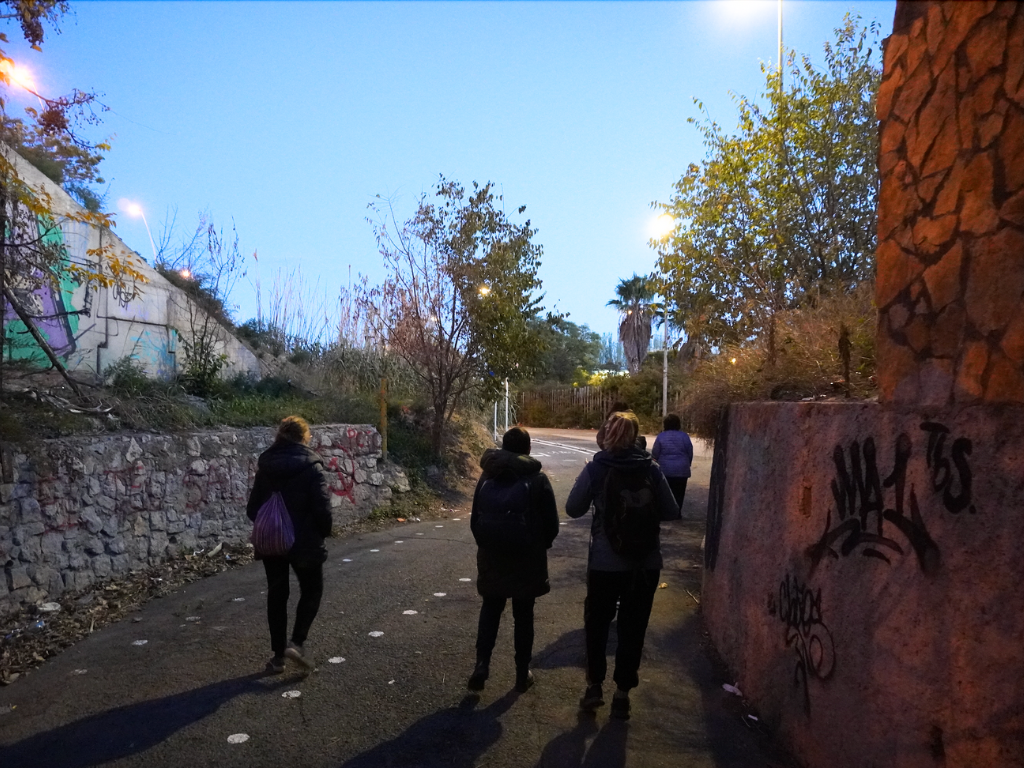09/02/2024
The URV community helps campus planning by detecting unsafe spots
Changes in lighting and vegetation, and restricted access are some of the gender-perspective measures proposed.

Changes in lighting and vegetation, and restricted access are some of the gender-perspective measures proposed.
Bellissens was the campus chosen to pilot a project to detect unsafe spots on URV campuses and use the gender perspective to improve campus planning. The students and members of staff from the campus in Reus used their needs and experience in terms of security and the distribution of spaces on and around the campus to detect points for improvement. Organised by the URV Equality Unit and funded by the State Pact against Gender Violence, this activity aims to locate spots on and around the campus that are unsafe for the most vulnerable groups.
Students from the School of Architecture (ETSA) were trained in the importance of applying the gender perspective to urban design and took part in an exploratory walk with other members of the university community to analyse the physical and social elements that make them feel safe. Together they walked around the unsafe spots that the students had detected in their training, such as tunnels under the railway line, the bridge over it or the open spaces around the campus.

A wide-ranging project to design URV campuses from the gender perspective.
The Bellissens campus is the first space to have been analysed by this project because it is where the School of Architecture is located and its position on the outskirts of the city of Reus means that it has more vulnerable spots.
After the first two stages – the talk by the group “Point 6” and the exploratory walk – the students on the Bachelor’s Degree in Architecture, Judit Vila and Sadibou Sow, are now preparing a report with the diagnosis and suggestions for the Bellissens campus. It will then be assessed for applicability.
At the same time, work is being done to extend the project to the other URV campuses, largely those on the outskirts like the Sescelades campus, so that one or two annual exploratory walks can be organised. Staff and students will be able to take part by responding to the announcements made by the head of the Equality in each campus.

Rethinking the lighting, vegetation and accesses
After the buildings, paths and surroundings of the campus had been analysed, several spaces that were unsafe for reasons of lightning and vegetation were identified. In this regard, urban design from a gender perspective means increasing the brightness of the interior and exterior spaces; reducing the density of the vegetation, and ensuring that the paths that lead to campus are properly marked.
The project is funded by the Ministry of Equality’s State Pact against Gender Violence, which makes it possible for the URV’s Equality Unit to implement such projects at the University. Also taking part is the group “Point 6”, a cooperative consisting of architects, sociologists and urban planners, who are rethinking domestic, communal and public spaces from a feminist perspective.
